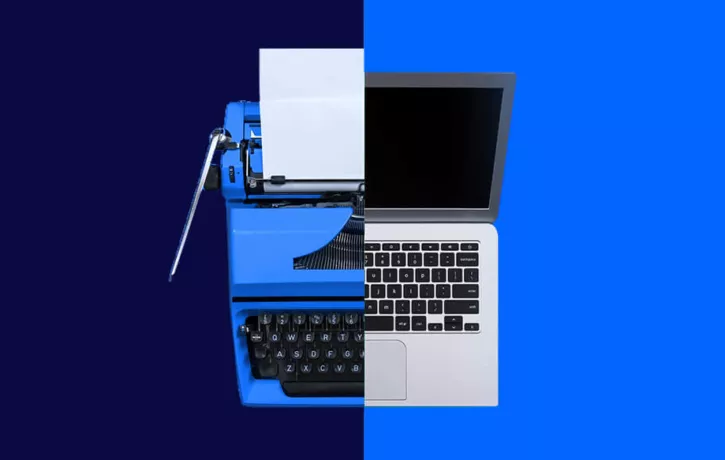The new CIO plays a hybrid role – part IT operations executive, part business executive.
This shift in responsibilities has been occurring for years, and it will continue to reshape the CIO’s mandate for years to come.
To succeed as a CIO, both now and in the future, it is important to understand what these changes are, how to keep up in today’s economy, and how to prepare for the future.
The new CIO is a hybrid executive
The “old” CIO – the traditional role played by the CIO – is that of an IT operations manager. Responsibilities generally revolved around IT services management, delivery, maintenance, and other operational IT functions such as cybersecurity.
The key distinction between the new and old CIO role is that modern CIOs are increasingly focused on strategic business initiatives.
Here are a few ways that the modern definition of CIO is changing:
- CIOs are adopting more responsibilities that tie digital strategy to business strategy. As a result, they are also being held responsible for more business outcomes, rather than just operational performance metrics.
- The new CIO is being called upon to design, develop, and lead digital innovation programs
- Research firms such as Gartner have suggested that CIOs also take a leading role in the development of the organization’s culture, in addition to their other responsibilities
- CIOs must work with other departments and continually strive to shrink the digital skills gap by developing reliable upskilling and digital adoption programs
Naturally, it is impossible for CIOs to take on responsibilities such as these while still maintaining their previous role.
The result is that most CIOs are rebalancing their workloads. A survey from IDG found that most CIOs tend to split their duties between operations and digital business initiatives.
Other research such as the TCS 2020 CIO Study, has found that companies who let their CIOs lead digital transformation outperform those that do not. As the year progresses, we can expect more organizations to adopt this model and offer additional leadership responsibilities to their CIOs.
What these role changes mean for the new CIO
These ongoing changes to the CIO mandate carry quite a few implications, both for businesses and for CIOs themselves.
Here are three examples of how CIOs must adapt to their new role:
The CIO will play a central role in the business and its growth
Digital technology is the force driving the evolution of the modern economy, both at the global scale and within individual companies. As technology becomes more integral to business performance, the CIO becomes more connected to growth and revenue-based activities.
Already, many CIOs are becoming increasingly responsible for revenue growth, business outcomes, profitability, innovation, and initiatives that propel business growth.
This means CIOs must:
- Cultivate a business-centered mindset
- Offload operational responsibilities to other IT leaders, or to emerging automation solutions
- Actively redefine their role in the organization and in the C-suite
- Acquire new skills and abilities (as mentioned below)
- Become cross-functional leaders that can deliver value across the organization
The CIO’s new purview presents new opportunities–CIOs now have the ability to steer an organization, add more value to the business, and launch it forward into the digital future.
At the same time, however, the list above shows that CIOs must be willing to expand their job profile and address a new set of challenges.
New responsibilities create new challenges to overcome
Today, CIOs are faced with a myriad of challenges and obstacles to surpass.
The nature of these obstacles will vary widely from organization to organization and can depend on factors such as the organization’s size, its digital maturity level, the company culture, the CIO’s existing role, the board, and so forth.
Here are a few key examples of the challenges faced by CIOs as they adapt to their new roles:
- Breaking down silos between departments and forming strong relationships with other executives
- Managing time, resources, and priorities effectively in a constantly changing and often volatile business environment
- Ensuring that employees stay skilled, engaged, and productive, even in the face of continual change
- Managing and leading people effectively through digital change projects
- Adapting one’s own mindset and skills to meet the expectations of the CEO and the board
In many cases, the “human side” of the equation will be the most difficult.
CIOs, after all, are used to managing IT operations – but now they are being called upon to become cross-functional leaders and collaborators. This, for some, may be the most daunting obstacle. Yet at the same time, that is where the greatest opportunity lies.
CIOs must become more involved in the “human side” of the business
Soft skills, such as communication skills, will become more important as CIOs become business leaders.
While technical skills are necessary to ensure IT operates at peak performance, soft skills are just as important when it comes to implementing business initiatives.
CIOs will need to hone skills such as:
- Leadership and managerial skills
- Persuasion and negotiation
- Managing workplace behavior, employee engagement, and resistance to change
- Verbal and written communication
- Project management and change management
To most, this sounds like the CIO position is a completely new job, and in some ways it is.
As we have seen, CIOs will need to completely rethink their roles, overcome new obstacles, and gain new skills in order to add value to the business. Though this road may not be easy, it will be stimulating and rewarding for those who succeed.


